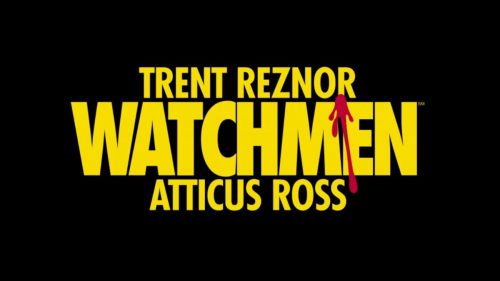Cliff Martinez’s THE NEON DEMON Is A Beautiful Obsession
Three films into their collaborative career, Nicolas Winding Refn and Cliff Martinez are quickly proving they can be one of cinema’s stellar director/composer tandems. Their latest oeuvre, The Neon Demon, is a cornucopia of feminine comeliness veiled in the stench of Italian giallo cinema. Refn referees a race between his eye-gougingly beautiful imagery and Martinez’s enigmatically provocative music that is so transfixing, so alluring, that you dare not turn your eyes (or ears) away, even for an instant.
The Neon Demon focuses on the all-consuming obsession with beauty and the dangerous ramifications of its intoxication. It represents a perfect marriage of sight and sound that is rare in modern day movies. As a film score, Martinez’s work is art at its purest form. As an album, it’s one of the more gratifying listening experiences of 2016. There are elements of sci-fi baron Bernard Herrmann mixed with the giallo-riffic sound of composers like Fabio Frizzi, Franco Micalizzi, and Pino Donaggio, swathed in an electronic language that is undeniably sexy.
As you may or may not know, in addition to writing about film music, I’m also a film composer, and like a zealous mechanic, I love to pop the hood of a great score and dig around inside the engine to see what makes it tick. When I inspect Martinez’s score for The Neon Demon, I find a lot of curious secrets that impress me. I apologize in advance for getting overtly technical, but this is the language I love to speak…
First, let’s take a look at the title track “Neon Demon” (Track 1).
The primary harmonic motif is built upon a pair of chords incorporating two parallel whole-tone scales a major-second apart. Neither major, nor minor, the resulting augmented chords (E aug and Bb aug) evoke an alluring, yet dangerous undertone to the music. The melodic interval outlining the see-sawing between each chord (C-F#) is a tritone (augmented 4th, or diminished 5th). In the early 18th century this interval was giving the nickname “diabolus in musica” which translates to “the devil in music” and was seriously feared for its sinfully demonic qualities. The other two tones in each chord also resolve a tritone away, meaning there are three simultaneous tritones (or “devil’s intervals”) occurring with each oscillation.
As this motif develops and the rhythm kicks in, the first of these two chords shifts by raising one of its tones a half step (E to F) creating a minor chord (Fm) while the second lowers one of its tones a half step (Bb to A) to create a major chord (D). This creates a cool expansion within the harmony resulting in a dominant parallel relationship between the two expressions. The tritone is no longer present in each individual chord; however, as each resolves to the other, the movement of three tritones is reduced to two. What happened to the missing tritone?
In the film, the image of a triangle has strong iconographic significance as does the symbology of the number three. At the risk of introducing any spoilers here, I’ll refrain from exploring this further so that you may discover the correlation for yourself. Once you’ve seen the film, feel free to return to this article and reread it for some interesting realizations.
Now let’s take a look at “What Are You?” (Track 4).
The music associated with Jesse (Elle Fanning) is child-like, perhaps even infantile in nature, much like the cascading twinkling of an antique music box. The harmonic shifts between the cascading chords rise a half-step with each phrase acting as a recurring theme that expresses Jesse’s naiveté and youthful innocence. This motif reappears throughout the film and can be heard on several tracks including “Take Off Your Shoes” (Track 7), and “Jesse Sneaks Into Her Room” (Track 9).
As the film evolves, so does Jesse’s character and ultimately her music. Her nauseating innocence transforms as does Martinez’s music around her. We hear less of the twinkling music box and more of the tritone (devil’s interval) infused electronica. The two idioms battle for her dominance.
The electronic textures Martinez concocts throughout the film are kept extraordinarily simple adding an elemental purity to the overall tone of the music. In the film, youthful beauty is revered above all things creating a bountiful stream of sin which consumes everything in its path. The restrained arsenal of tracks used to construct Martinez’s score represents some of the more fundamental principles of synth programming: a simple vibes pad, a delay-programmed synth bass, since-wave lead synths, atmospheric choral pads, twinkling bell-pads bathed in reverb and delay, and an occasional sweep filter thrown in to sculpt the music and give it personality. Even the thickest produced pieces limit their overall aural real estate to a handful of tracks so as not to obscure the clarity and naiveté of each individual part. It’s about beauty and its pretentiousness is achieved through simplicity not undisguised complexity.
Director Nicolas Winding Refn and composer Cliff Martinez were at the screening I attended. During the half-hour Q&A, Cliff mentioned something in response to a question that was a bit of a surprise for me. He referred to his score for The Neon Demon as “inorganic” and probably the “most plastic score” he and Refn have ever done. If that’s true, then my comments may not be revered as complimentary as I intend them to be.
The greatest quality of Martinez’s score is that it is wholly organic electronic music revealing a genuine sense of craft and exemplary musical composition. Commendable electronic music is so difficult to pull off because it’s so incredibly easy to do poorly. Oftentimes attention is paid more to the science of the actual act of programming and less to the delicate balance of melody, harmony, or rhythm within a musical context. Or you’ll often find electronic music reduced to triggered loops that pound away ad nauseam without any degree of development or understanding of music itself.
I wouldn’t shy away from the opinion that I find most electronic music to be boring, lifeless masses of arbitrary sound that doesn’t amount to much of anything. This is even more obvious to me in the world of cinema.
Martinez’s music (especially when composed for Refn films) transcends these ubiquitous characteristics revealing an organic melange of rhythm, melody, and harmony that is rare in the cinematic world. It’s never boring and always piques the curiosity of your ear with each blossoming phrase. The craft and level of composition is apparent and from a film scoring perspective, also demonstrates Martinez’s increasing understanding and awareness of the art of storytelling through cinema.
I should also note that one of the crown jewels of the soundtrack wasn’t actually composed by Martinez but rather Julian Winding. It’s called “Demon Dance” (Track 3) and it will own you. Its hypnotic rhythms and punchy gestures mesmerize you into a catatonic state of bliss. The closing credit song “Waving Goodbye” written and performed by Sia is also a welcome shot of adrenaline for your ears as is the song “Mine” by Sweet Tempest. Refn has a genuine knack for harmoniously blending original underscore with pre-existing songs and that becomes even more apparent watching The Neon Demon.
Martinez’s score for Refn’s Only God Forgives was my number one favorite score of 2013. I wouldn’t be surprised to find The Neon Demon on my list this year as it’s already a major standout halfway through the 2016. I have listened to the album every single day since I saw the film and I don’t foresee my routine changing anytime in the near future.
Don’t hate it because it’s beautiful.



